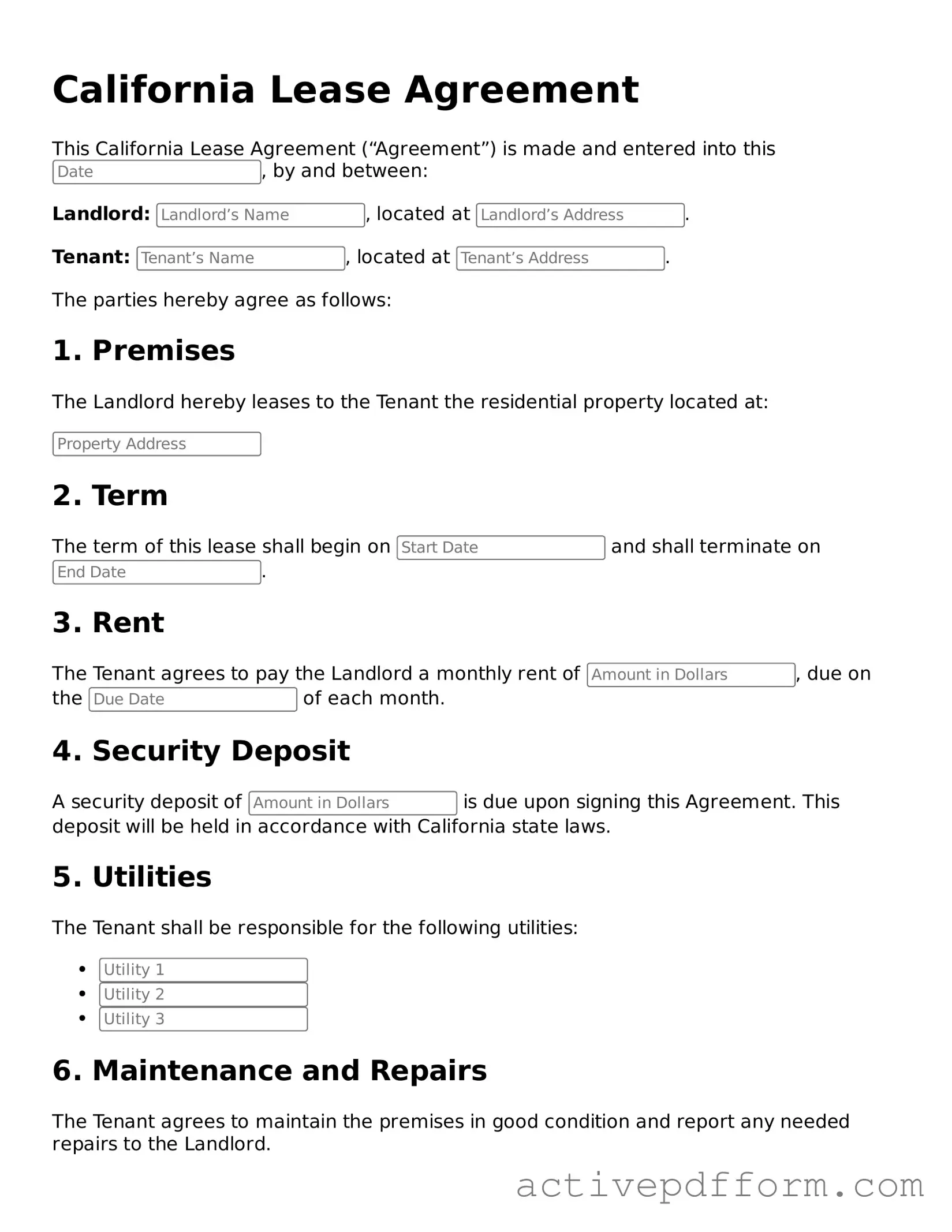Blank California Lease Agreement Document
The California Lease Agreement form is a legal document that outlines the terms and conditions between a landlord and tenant for renting residential or commercial property in California. This essential agreement serves to protect the rights of both parties while ensuring clarity in the rental relationship. Understanding its components is crucial for anyone looking to lease property in the state.
Ready to get started? Fill out the form by clicking the button below.
Access Lease Agreement Editor Here
